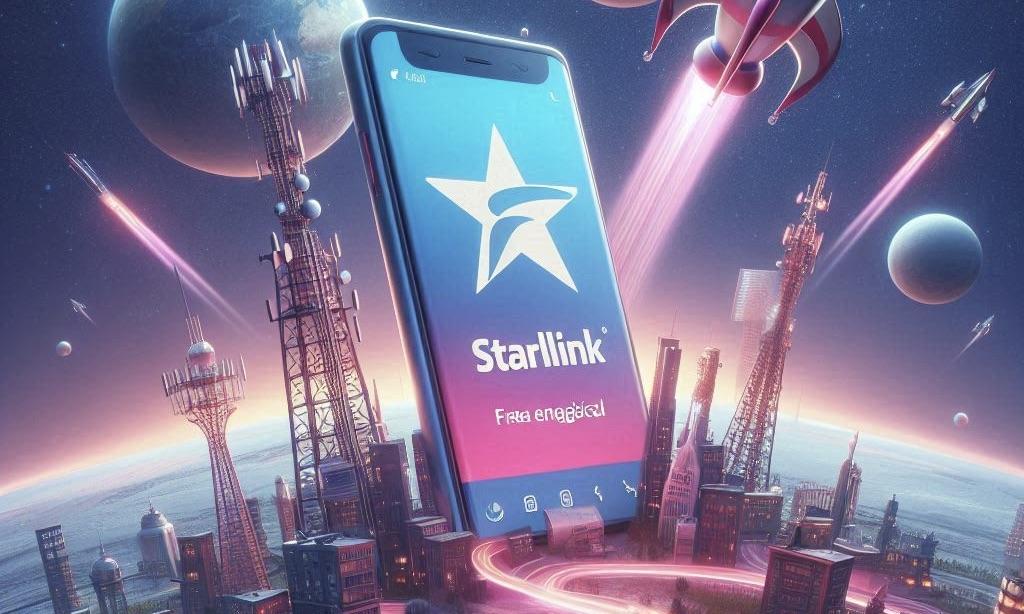SpaceX’s Starlink, in partnership with T-Mobile, will launch “Direct to Cell” services offering free global emergency services this fall. The service aims to provide Wireless Emergency Alerts to all, including non-T-Mobile customers, in areas lacking terrestrial coverage.
Starlink Teams with T-Mobile to Launch Global Emergency Services, Offering Coverage in Remote Areas
SpaceX's Starlink "Direct to cell" services will provide complimentary emergency services globally in collaboration with T-Mobile, per Teslarati.
"The two companies are particularly enthusiastic about the service's ability to deliver Wireless Emergency Alerts to all individuals, including non-T-Mobile customers, in regions without terrestrial coverage," SpaceX stated in a letter to the FCC on August 23, 2024.
Elon Musk clarified that Starlink's "Direct to Cell" feature could benefit individuals stranded in the wilderness or distress. He verified that emergency service access will be available worldwide through Starlink's cellular services, provided that the respective governments have granted sanction.
Apple's Emergency SOS feature, accessible on iPhones 14 and later, appears comparable to Starlink's emergency services. Brendan Carr, the Republican Commissioner of the Federal Communications Commission, observed that Starlink Direct to Cell would likely be advantageous to first responders and public safety communications.
In the autumn of this year, SpaceX and T-Mobile anticipate introducing Starlink Cellular.
---
In a May report, SpaceX said it targets a Fall 2024 launch for its highly anticipated Starlink direct-to-cellular phone service. The company’s plans were mentioned in a filing submitted to the Federal Communications Commission (FCC).
“SpaceX appreciates the Commission’s leadership in adopting a flexible regulatory framework for supplemental coverage from space (‘SCS’) that will enable ubiquitous mobile coverage for consumers and first responders and will set a strong example for other countries to follow. SpaceX supports nearly all of the Commission’s recent SCS Order and looks forward to launching commercial direct-to-cellular service in the United States this fall,” the filing read.
The FCC filing also disclosed SpaceX's future intentions for its Starlink direct-to-cellular technology. At its launch, Starlink's direct-to-cell system is intended to offer consumers text, voice, and web browsing capabilities, but more sophisticated features may be implemented.
“Although SpaceX currently intends to provide text, voice, and web browsing through its supplemental coverage network, future innovations may permit even more robust supplemental coverage service and enhanced features. While this improved service will not substitute for terrestrial mobile networks, it would provide an enhanced source of connectivity where those networks do not exist,” the FCC filing noted.
SpaceX acknowledged in its filing that the FCC's current framework for satellite-to-phone connectivity may impede Starlink's direct-to-cellular service launch in Fall 2024. The SpaceX filing encouraged the FCC to reconsider the aggregate limit on radio frequencies for cellular satellites, as indicated in a PCMag report.
“An across-the-board, aggregate out-of-band limit… will unfortunately undermine the goal of providing robust coverage during emergencies… Because these limits will apply even where no adjacent terrestrial networks exist or where those networks have been damaged by natural disasters, the aggregate limit will needlessly limit the coverage and quality of direct-to-cellular connectivity even where there is no risk of adjacent-band interference,” SpaceX noted in its filing.



 FCC Exempts Select Foreign-Made Drones From U.S. Import Ban Until 2026
FCC Exempts Select Foreign-Made Drones From U.S. Import Ban Until 2026  FDA Adds Fatal Risk Warning to J&J and Legend Biotech’s Carvykti Cancer Therapy
FDA Adds Fatal Risk Warning to J&J and Legend Biotech’s Carvykti Cancer Therapy  Trump Signs Executive Order to Boost AI Research in Childhood Cancer
Trump Signs Executive Order to Boost AI Research in Childhood Cancer  AMD Unveils Next-Generation AI and PC Chips at CES, Highlights Major OpenAI Partnership
AMD Unveils Next-Generation AI and PC Chips at CES, Highlights Major OpenAI Partnership  Astronomers have discovered another puzzling interstellar object − this third one is big, bright and fast
Astronomers have discovered another puzzling interstellar object − this third one is big, bright and fast  SpaceX’s Starship Completes 11th Test Flight, Paving Way for Moon and Mars Missions
SpaceX’s Starship Completes 11th Test Flight, Paving Way for Moon and Mars Missions  NASA Cuts Boeing Starliner Missions as SpaceX Pulls Ahead
NASA Cuts Boeing Starliner Missions as SpaceX Pulls Ahead  OpenAI Sets $50 Billion Stock Grant Pool, Boosting Employee Equity and Valuation Outlook
OpenAI Sets $50 Billion Stock Grant Pool, Boosting Employee Equity and Valuation Outlook  Eli Lilly’s Inluriyo Gains FDA Approval for Advanced Breast Cancer Treatment
Eli Lilly’s Inluriyo Gains FDA Approval for Advanced Breast Cancer Treatment  Stellantis to End Plug-In Hybrid Sales in the U.S. as Demand Shifts Toward Traditional Hybrids
Stellantis to End Plug-In Hybrid Sales in the U.S. as Demand Shifts Toward Traditional Hybrids  Chevron Sees Path to Boost Venezuela Oil Output by 50% After Trump Administration Talks
Chevron Sees Path to Boost Venezuela Oil Output by 50% After Trump Administration Talks  Lost in space: MethaneSat failed just as NZ was to take over mission control – here’s what we need to know now
Lost in space: MethaneSat failed just as NZ was to take over mission control – here’s what we need to know now  Anthropic Launches HIPAA-Compliant Healthcare Tools for Claude AI Amid Growing Competition
Anthropic Launches HIPAA-Compliant Healthcare Tools for Claude AI Amid Growing Competition  Walmart to Join Nasdaq-100 Index as It Replaces AstraZeneca Following Exchange Move
Walmart to Join Nasdaq-100 Index as It Replaces AstraZeneca Following Exchange Move  Trump Considers Starlink to Restore Internet Access in Iran Amid Protests
Trump Considers Starlink to Restore Internet Access in Iran Amid Protests 































